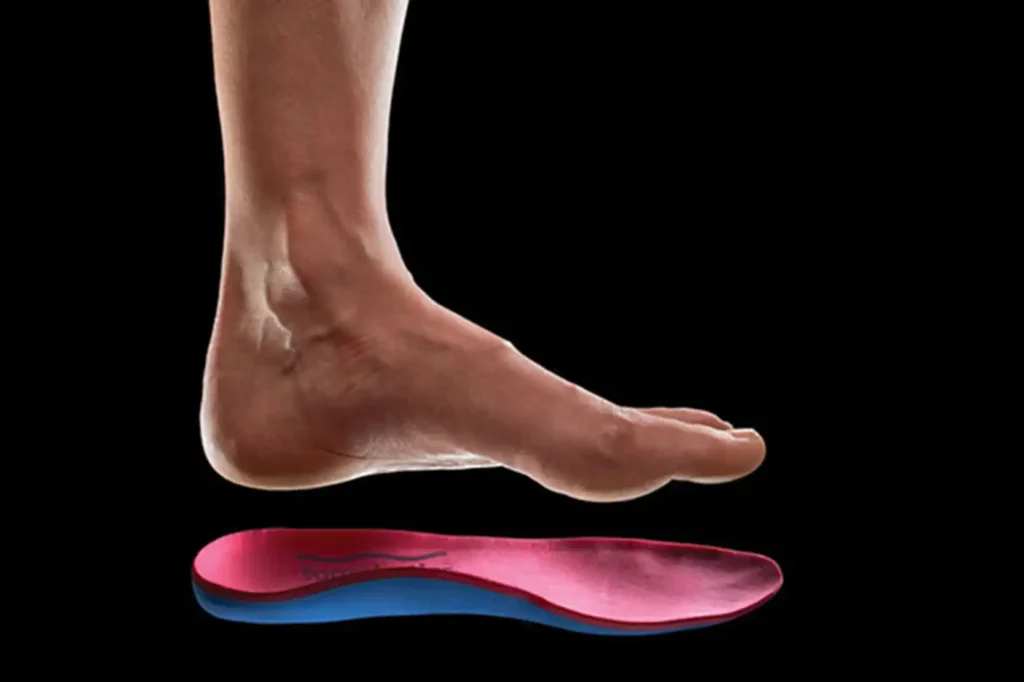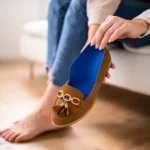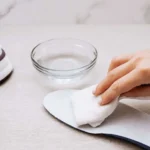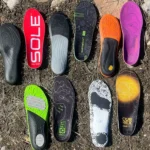Learn about different types from custom orthotics to over-the-counter inserts and get practical tips for using them effectively. Whether you’re on your feet all day or dealing with chronic heel pain, discover how orthopedic insoles can help you walk pain-free again.
What Are Orthopedic Insoles for Plantar Fasciitis:
If you’re waking up to a sharp, stabbing pain in your heel, especially during those first few steps in the morning, you’re likely dealing with plantar fasciitis a common yet frustrating foot condition. The pain originates from inflammation in the plantar fascia, a thick band of tissue running along the bottom of your foot. And if you’ve tried everything from stretching to icing with no relief, orthopedic insoles may just be your game changer.
As someone who has personally dealt with plantar fasciitis, I can tell you that these insoles are not your average shoe inserts. They are carefully engineered with medical-grade support to align your foot properly, reduce strain on the fascia, and provide comfort during long hours of walking or standing. Let’s break down how orthopedic insoles work and why they’re such a highly recommended remedy.
Start with 1–2 hours and gradually increase as your feet adjust. Daily use is key to long-term relief.
How Orthopedic Insoles Help with Plantar Fasciitis:
Orthopedic insoles are designed to support the natural alignment of your foot, which is crucial for healing plantar fasciitis. The most important feature is arch support. People with flat feet or very high arches often strain the plantar fascia without realizing it. These insoles cradle your arch, reducing tension and promoting better weight distribution across your foot.
They also absorb shock from walking or running, which protects your heel where the pain is often the worst. By reducing the impact with every step, orthopedic insoles help your inflamed fascia recover faster. Some insoles even feature deep heel cups that stabilize the heel and prevent rolling, a common trigger for plantar fasciitis flare-ups.
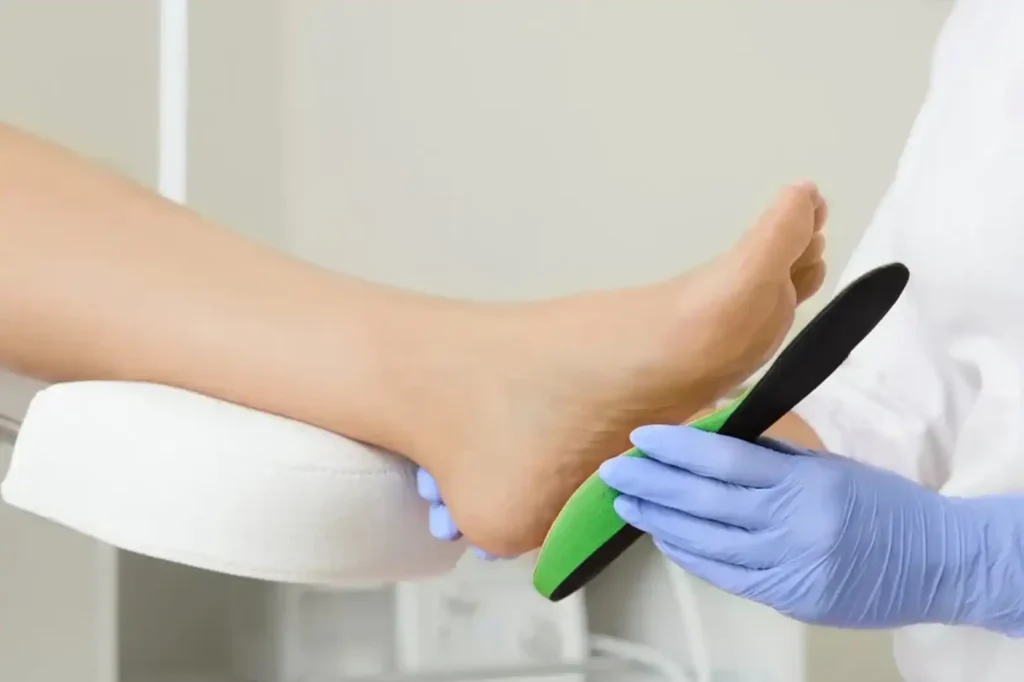
Key Features to Look for in Orthopedic Insoles:
Not all insoles are created equal, especially when you’re dealing with plantar fasciitis. Here’s what to prioritize. The right pair of orthopedic insoles can significantly reduce symptoms within weeks, especially when combined with rest, stretching, and supportive footwear.
- Firm Arch Support: Soft, gel-like inserts might feel comfy at first, but they don’t provide the structured support needed to reduce strain on the plantar fascia.
- Deep Heel Cup: This keeps your heel properly aligned and minimizes impact on the heel bone.
- Shock-Absorbing Materials: Look for EVA foam, cork, or polyurethane. These materials help reduce pressure and improve comfort during long periods on your feet.
- Custom Fit or Trim-to-Fit: Whether you choose off-the-shelf or custom orthotics, make sure they fit snugly in your shoes and align properly with your heel and arch.
Types of Orthopedic Insoles for Plantar Fasciitis:
There are several types of orthopedic insoles tailored to different foot shapes and pain levels. Your choice depends on your foot anatomy, severity of symptoms, and budget but even OTC insoles can offer significant relief if you pick the right one.
- Custom Orthotics: These are prescribed by podiatrists and molded to your exact foot shape. They offer the most precise support and are ideal for chronic or severe plantar fasciitis.
- Over-the-Counter Insoles: Brands like Powerstep, Superfeet, and Dr. Scholl’s offer high-quality insoles with strong arch support and cushioning. They’re a budget-friendly and effective option.
- Heel Inserts or Cups: These focus solely on cushioning the heel. While they can be helpful, they’re usually best used in combination with full-length insoles for better overall support.
Who Should Use Orthopedic Insoles:
Orthopedic insoles aren’t just for athletes or runners. If you spend long hours on your feet whether you’re a teacher, retail worker, healthcare professional, or parent chasing kids you could benefit from them. Also, if you have flat feet, high arches, or foot pronation issues, orthopedic insoles can correct alignment and reduce stress on your fascia.
And let’s not forget people over 40: as we age, our foot padding thins and our muscles and tendons lose elasticity. That’s a perfect storm for plantar fasciitis. Using orthopedic insoles proactively can help prevent flare-ups and reduce long-term foot problems.
Tips for Using Orthopedic Insoles Effectively:
Simply buying insoles and slipping them into your shoes isn’t enough. Here’s how to get the most benefit. Also, pair your insoles with a daily stretching routine for your calves and plantar fascia. Combined with night splints or occasional icing, you’ll likely notice major improvements.
- Break Them In Gradually: Start with 1-2 hours a day and increase usage over a week. Your feet need time to adjust.
- Use in Supportive Shoes: A good insole in a bad shoe won’t work. Use them in shoes with firm soles and roomy toe boxes.
- Replace When Worn Out: Most insoles last 6–12 months with regular use. Watch for flattening or loss of support.
Top 5 Best Insoles for Men’s Dress Shoes:
1. Superfeet Premium Dress Fit Insoles: These are my personal go-to. Designed specifically for men’s dress shoes, they offer exceptional arch support without adding bulk. The deep heel cup and biomechanical shape help with heel pain and plantar fasciitis. Plus, the ultra-thin design fits perfectly into leather-soled Oxfords or loafers without altering the fit.[https://amzn.to/43GjvDC]
2. Tread Labs Ramble Thin Insoles: Great for guys who need extra arch support and want a semi-rigid orthotic. They’re modular, so you can swap out the top cover. The low profile works well in narrow dress shoes. Best for all-day standing or walking.[https://amzn.to/4jvkWur]
3. Dr. Scholl’s Comfort & Energy Work Insoles (Trim to Fit): These are a more budget-friendly option. While not as durable as Superfeet or Tread Labs, they offer decent cushioning and can be trimmed to fit any dress shoe. Ideal for occasional formal wear.[https://amzn.to/4jBMOgF]
4. Vionic Active Orthotic Inserts: Known for podiatrist-designed footwear, Vionic offers great support for people with overpronation. These insoles feature a deep heel cup and firm yet flexible arch support. Slightly thicker, so best for shoes with removable insoles.[https://amzn.to/4mK4VDV]
5. PowerStep Pinnacle Dress Insoles: These insoles are specifically made for tighter dress shoes and offer a nice balance between support and cushioning. They’re often recommended by foot specialists for men dealing with heel or arch pain.[https://amzn.to/4kHt9wK]
When to See a Doctor:
While orthopedic insoles help in the majority of plantar fasciitis cases, some situations call for medical attention. In these cases, a podiatrist may recommend physical therapy, custom orthotics, or imaging to rule out other conditions like heel spurs or stress fractures.
- Persistent pain after 6–8 weeks of consistent insole use
- Severe swelling or bruising
- Inability to bear weight on the heel
FAQ
Most frequent questions and answers
Yes, they reduce strain on the plantar fascia by offering targeted arch support and shock absorption, speeding up recovery.
Start with 1–2 hours and gradually increase as your feet adjust. Daily use is key to long-term relief.
For most people, high-quality over-the-counter insoles work well. But chronic cases may need custom orthotics from a podiatrist.
Conclusion:
By offering structured arch support, heel stability, and shock absorption, they help reduce inflammation and speed up recovery. In conclusion, orthopedic insoles for plantar fasciitis provide one of the most effective and accessible ways to manage heel pain and support long-term foot health. Whether you’re on your feet all day or just want to walk pain-free again, investing in the right insoles can make a big difference. Don’t wait your feet deserve the support they need to heal.


